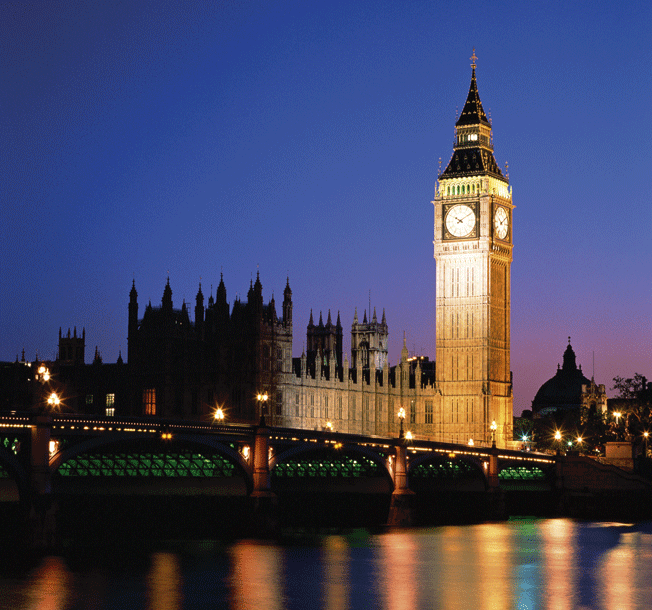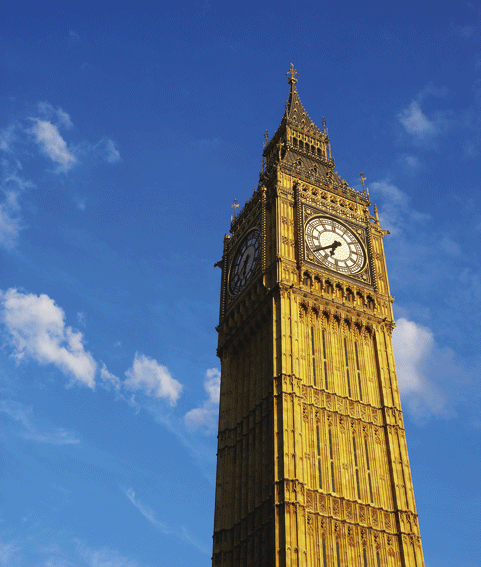
Travel
Big Ben Strikes on Time!

Britain’s most famous symbol stands proud in London, showing the exact time since 1859
London: Ali Subhi
It is impossible to hold time and less likely to contain its minutes. It is like imprisoning oneself in his own world. London is a historical capital where time makes events and shapes daily happenings. Therefore, it was necessary to find a way to remind people of the passing of time in a very loud way around the clock.
Big Ben is the most famous monument in London, and most recognized symbol of the United Kingdom worldwide. Adjacent to the Parliament building on the bank of the River Thames, Big Ben stands proudly witnessing history since 1895. Every day thousands of tourists stand beneath it to witness the beauty of its design and take snapshots to document their stop in London.
North Tower
Big Ben is the nickname of the clock standing over the north tower of the Parliament building. It was arched in four directions and can be seen from any angle. The name Big Ben is the nickname given to the British Minister of Works Benjamin Hall, who oversaw the design and the construction of the tower. The name was extended to the big Bell and later to the clock itself.
The clock’s mechanism
Big Ben clock started working on June 3, 1859. It was designed by Edmund Beckett Denison. Its construction was entrusted to the clockmaker Edward John Dent who was replaced by Fredrick Dent upon his death.
Instead of using the deadbeat escapement and remontoire as originally designed, Denison invented the double three-legged gravity escapement. This escapement provided the best separation between pendulum and clock mechanism which minimized friction among the parts of the clock. The pendulum was installed within an enclosed windproof box sunk beneath the clock room.
Unique way to adjust the clock’s time
On top of the pendulum is a small stack of old penny coins; adding or subtracting a coin changes the clock’s speed by 2/5 seconds per day. The tower is 96 meters high and reflects the Gothic style in western architecture. The bulk of the tower was built using mixed material stones to ensure solidity and durability. The rest of the tower, the dome with its four-faced clock was made of steel.
British Parliament
The Big Ben clock was made and arched on one of the towers of the British Parliament after a huge fire that destroyed the old building in 1834. The Westminster Palace, home to the clock tower, has four floors hosting the Houses of Commons and Lords. It includes 1100 rooms, 100 staircases, and about four and a half kilometers of corridors. The Palace is in Westminster Square on the north bank of the River Thames in central London.
In October 1843, a massive fire broke out and destroyed most of Westminster Palace. Only the Hall survived. A Royal Commission was set up to study and rebuild the destroyed structure.
That Commission was engaged in much public debate on the new architectural style of the new Palace. Opinion was divided into two different viewpoints: The first wanted to adopt a neo-classical style similar to that of Congress and the White House in the United States, a revolutionary style with republican aspirations. The second was more conservative and opted out for the dominant Gothic architectural style. After a year of controversial debates and objections, the matter was settled and the Commission went for the Gothic style.
This palace has become one of the many monuments in the city of London and it is also known as the Houses of Parliament as mentioned in history books since the Middle Ages.
Today, it is one of the great symbols of the city which continues to impress tourists with its magnificent architecture, greatness of organization and strict laws. It mesmerizes its visitors and attracts many new tourists. One of the hallmarks of the modern city’s history is the statue of Winston Churchill erected in front of the Parliament building, as if history claims victory over time.
The city’s identity
The Westminster palace with its yellow stones occupies a large area of Westminster Square. But despite its magnificence and unique Gothic architecture, the palace has lost some of its allure, becoming less significant in defining the city’s identity. The palace and the other old monuments are being pushed aside by a more recent monument. On the opposite side of the Thames, the London Eye was erected high up in the sky. It is the biggest Ferris wheel ever built. The motive behind its construction was not war, politics, nor history. It was simply built as a tourist attraction, and has become the most popular paid attraction in the United Kingdom visited by over three million people a year. The Eye of London stands as high as 450 feet reaching the horizon; it weighs 1600 tons and its parts were constructed in France, Italy, and the Czech Republic. It was officially opened for visitors in the year 2000, hence receiving the name, Millennium Wheel.
Multiple Interpretations
It is strange how things happen and how times change. We used to see the Palace of Westminster since early times and hear the Big Ben tireless strikes.Now, we have the London Eye, which is a unique and versatile structure that turned into a new landmark on the eternal river. Therefore, the new modern features compete with the traditional in determining London’s identity. The old versus the new, in their varieties and functional divergence, despite their proximity, raise a very difficult question to answer: Which influences the other; history or economy?